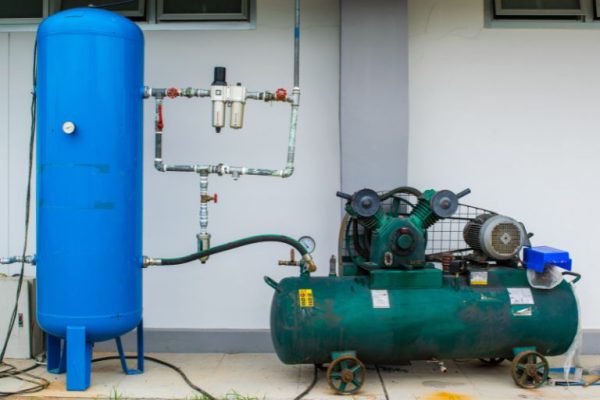Breathing air filters play an ever so important role in ensuring that air compressors maintain a high amount of quality and safe breathing air in industrial and residential facilities.
This page will serve as your guide to compressor-breathing air filters, providing you will all the relevant information necessary.
Table of Contents
- What Are Breathing Air Filters?
- How Do Breathing Air Filters Work?
- Considerations When Choosing A Breathing Air Filter
- FAQs (Frequently Asked Questions)
What Are Breathing Air Filters?
Breathing air filters are well-maintained high-quality components that are particularly important in reducing the number of contaminants, allergens, and particulates that circulate within a compressed air system.
They protect users of air compressors from breathing in these potentially harmful air pollutants. They’re fitted into compressor systems where the provision of quality air is extremely important.
Despite their simplicity, choosing the right breathing air filter can make all the world of difference on your air compressor in relation to its performance and overall air quality.

How Do Breathing Air Filters Work?
When the contaminated atmospheric air enters the breather air filter, the larger solid particles that are unable to be suspended in the air hit and stick to them under a process called impaction.
The filter then removes the medium-sized particles through a process called interception. In this process, the particles float in the air through their turbulent flow, allowing the smaller diameter of the filter to restrain the larger particles.
A final process, diffusion, allows the filter to clean the remaining small particulates from the air. These very small particles move in a random motion which causes them to hit one another, slowing down and sticking onto the filter medium.
The air then continues into a coalescing filter which has tiny filter elements that collect moisture and oil droplets when the air passes through the filter. The droplets then amalgamate into large particles which then drain into the filter housing and away from the air supply.
Thereafter, the air continues in adsorption filters which have activated carbon in them which attracts the oil vapors and odors and removes them from the air.
This combination of filters results in high-quality air that is free of all major contaminants.
Considerations When Choosing A Breathing Air Filter
Breathing air filters are available in many different variations, each providing suitable contaminant-reducing levels of efficiency. When selecting an air compressor breathing filter for your system you should consider the following:
- Breathing air requirements
- Portability
- Presence of CO and other toxic gases
Breathing Air Requirements
National regulatory bodies such as OSHA and CSA outline general air quality requirements for the protection of workers. Certain industries may also impose their own requirements and restrictions regarding breathing air quality.
The specifications will vary depending on the materials being handled and what operations you’re conducting therefore it is important to be aware of the standards in your particular industry.
If you’re wondering Can you use standard compressed air as a breathing air compressor? please visit our page dedicated to answering this question for you!
Portability
Portable equipment is of course essential for remote operations. When choosing a portable breathing air filter you must ensure you can carry it to your desired job site. This may not be much of a consideration if you’re installing yours at home and do not plan for it to be moved often if at all.
Presence of Co and other toxic gases
Carbon monoxide is an extremely toxic byproduct of combustion and therefore must be filtered out if the air compressor is exposed to this and sends it downstream.
For this reason, compressors employed in environments with high levels of Co or other toxic gases must be fitted with specialized units that turn the compounds into less hazardous materials. These specialized units are typically catalytic converters that turn Co into Co2 for example.
Most industrial applications and most likely your home garage will not have significantly high levels of toxic gases prevalent so a breathing filter without a catalytic converter will be viable.
FAQs (Frequently Asked Questions)
Compressed air that comes from industrial air compressors is really not suitable for breathing. Industrial air compressors have lubrication within their systems along with pulling in other contaminants in the air.
Some of that lubrication and contaminants can get into the air stream within the system, into the tank, and then also into the airlines heading toward the outlet. Therefore, it is important you do not breathe this air as it can be very dangerous to your health.
Yes, certain air compressors can be used as standalone compressors or integrated with a ventilator. In this case, no storage tank would be used to avoid bacterial infection whilst a solenoid valve and dryer assembly are imperative.
For example, oil-free piston compressors are capable of delivering dry medical-grade quality compressed air.
Yes, almost all compressed air systems call for a clean supply of air. Therefore, filters are certainly required in order to deliver this.
They may be able to handle a small amount of particulates or vapors, but not a large amount. Both these particulates and vapors will be capable of damaging not only your air compressor system but the end-use tools and potentially yourselves.
They include filters which typically have multiple stages to remove pollutants from the air stream. These are:
1. A coalescing filter that removes liquid oil droplets from the airflow
2. A catalytic converter then converts Co into Co2
3. An activated carbon filter that removes the oil vapor and aerosols from the airflow
4. A final filter that will remove any remaining solid particulates in the airflow
If you have any questions or comments about breather air filters for compressors then please comment below with a photo if applicable so that someone may help!
